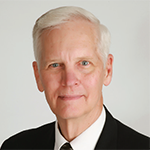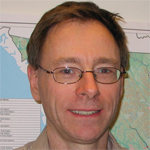Background: Rheumatologists are a smart bunch, to be sure, and Dr. Mountz could have been a nuclear physicist, literally. However, his early interest (which went as far as master’s and doctorate’s degrees in nuclear physics from Michigan State University in East Lansing, Mich.) in the field waned. Instead, he embarked on a career as a groundbreaking scientist in rheumatology.
Dr. Mountz’s pioneering work includes being one of the first investigators to link the expression of certain oncogenes with autoimmunity; being the first investigator to use T cell-receptor transgenic mice to address the role of defective T cell tolerance in autoimmunity; being a major contributor to our understanding of the roles of apoptosis and autoimmunity; and using a multigenetic BXD2 mouse model in autoimmune disease to provide the first evidence that increased activation-induced cytidine deaminase promotes development of pathogenic autoantibodies and that IL-17 promotes autoreactive germinal centers by direct migratory effects on B cells.
And if that’s not enough, Dr. Mountz was chosen in 2002 as one of 50 Arthritis Foundation Heroes who contribute outstandingly to rheumatology. Since 2003, he has been UAB’s J.W. & Virginia Goodwin-Warren D. Blackburn Jr. Research Chair in Rheumatology.
Q: You’ve been the first to do many things. What do you attribute that to?
A: I think everything is possible. I try to visualize individual components of complicated systems, such as the immune system, working together, and then I can usually envision what might be the underlying principal or mechanism that would explain an abnormal function. Even if I’m wrong, this gives me a direction to learn from as more experiments are done. This is exactly what I wanted to do when I got out of physics.
Also, I learned from some of the greatest visionaries in rheumatology, such as Alfred D. Steinberg, MD, at the NIH and William J. Koopman, MD, at UAB. They gave me the insights, confidence and freedom to pursue my dream of making innovative contributions to rheumatic disease research.
Q: How important is the first thing you just said: “I believe anything is possible?”
A: When I see an experimental problem that has not been solved, I think, ‘I can do that.’ I think it’s important to have a positive attitude and begin new experimental directions with the confidence that this will work, and we will learn something new and important. If not the first time, eventually it will work and become possible.
Distinguished Fellowship Program Director Award
 Sterling West, MD, MACP, MACR
Sterling West, MD, MACP, MACR
Professor of Medicine, University of Colorado School of Medicine, Aurora



